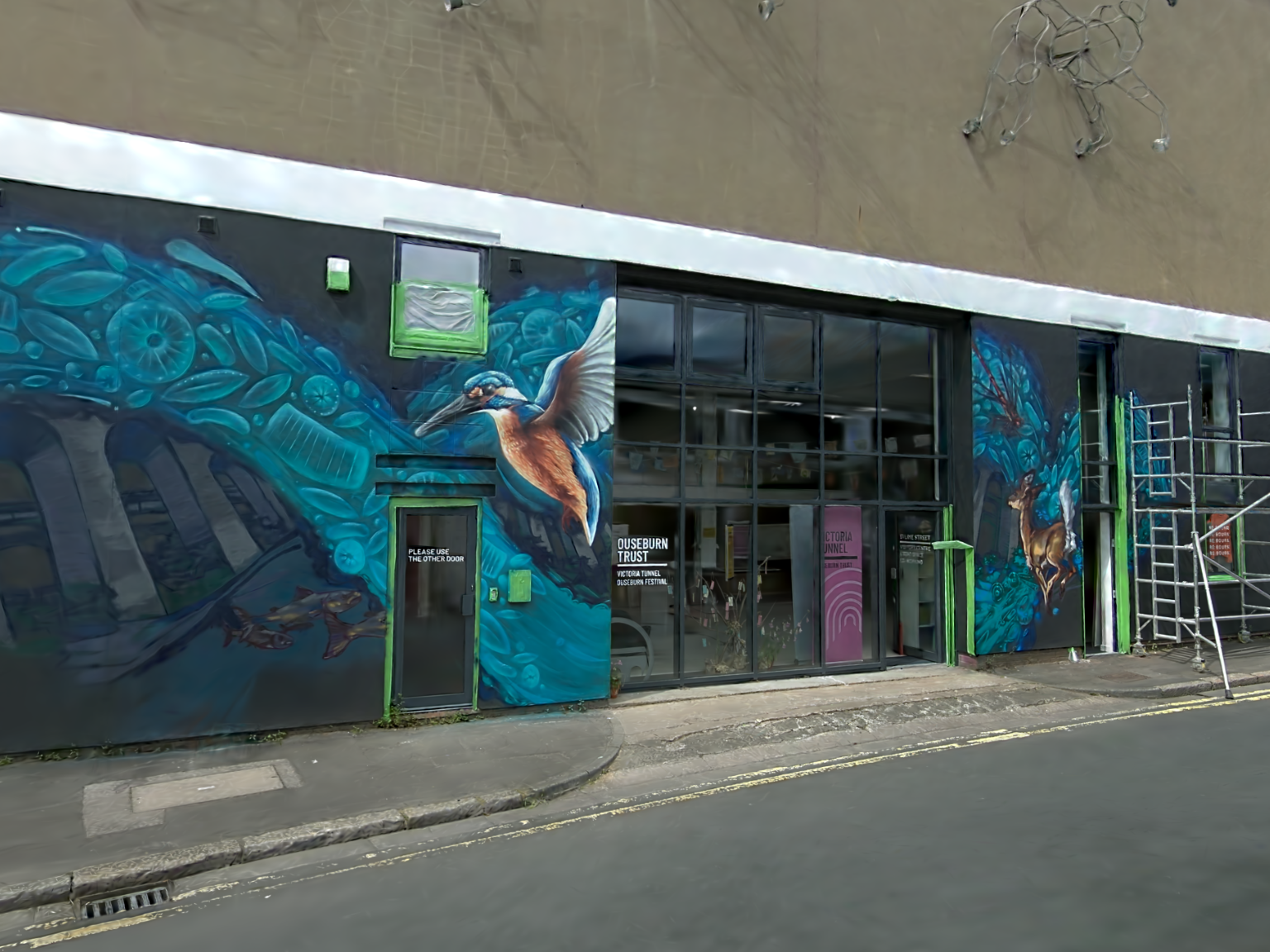
Technical
Published on 11 Dec 2024
James Willoughby
3D Gaussian Splatting For Reality Capture
Datasets, created with the XGRIDS handheld scanner and software ecosystem, show the benefits of Gaussian Splatting for building realistic, large-scale 3D models.
Datasets show the huge potential of Gaussian Splatting for reality capture - creating photo-realistic 3D models of large-scale environments;
Gaussian Splatting is a 3D rendering technique that is growing in popularity;
3DGS (aka Gaussian Splatting) can be used for AR/VR, gaming, virtual tours, and surveying - among other applications;
XGRIDS is one company leading the charge in this sector and heliguy™ has added the XGRIDS ecosystem to our product portfolio;
Datasets in this article were collected by heliguy™ survey team and client Alan Broun, who rented the XGRIDS K1 scanner from heliguy™ to help prove the concept of 3DGS.
Exclusive datasets demonstrate the power of Gaussian Splatting for creating ultra-realistic large-scale 3D models.
This lifelike digitisation of the Ouseburn area of Newcastle was captured with the XGRIDS LixelKity K1 handheld laser scanner in 17 minutes by the heliguy™ in-house survey team.
Meanwhile, this video of the museum at Knaresbrough Castle was captured with the K1 laser scanner by heliguy™ client Alan Broun - from software development company Beholder Vision Ltd.
It took him less than an hour to survey the site using the SLAM-based device he rented from heliguy™.
Both datasets were processed through XGRIDS’ CyberColour - a software suite which utilises multi-SLAM & 3DGS (aka Gaussian Splatting) to create next-gen 3D content.
Gaussian Splatting is a 3D rendering technique that is growing in popularity thanks to its ability to create high-quality 3D models of real-world scenes - overcoming modelling challenges in large spaces and complex environments.
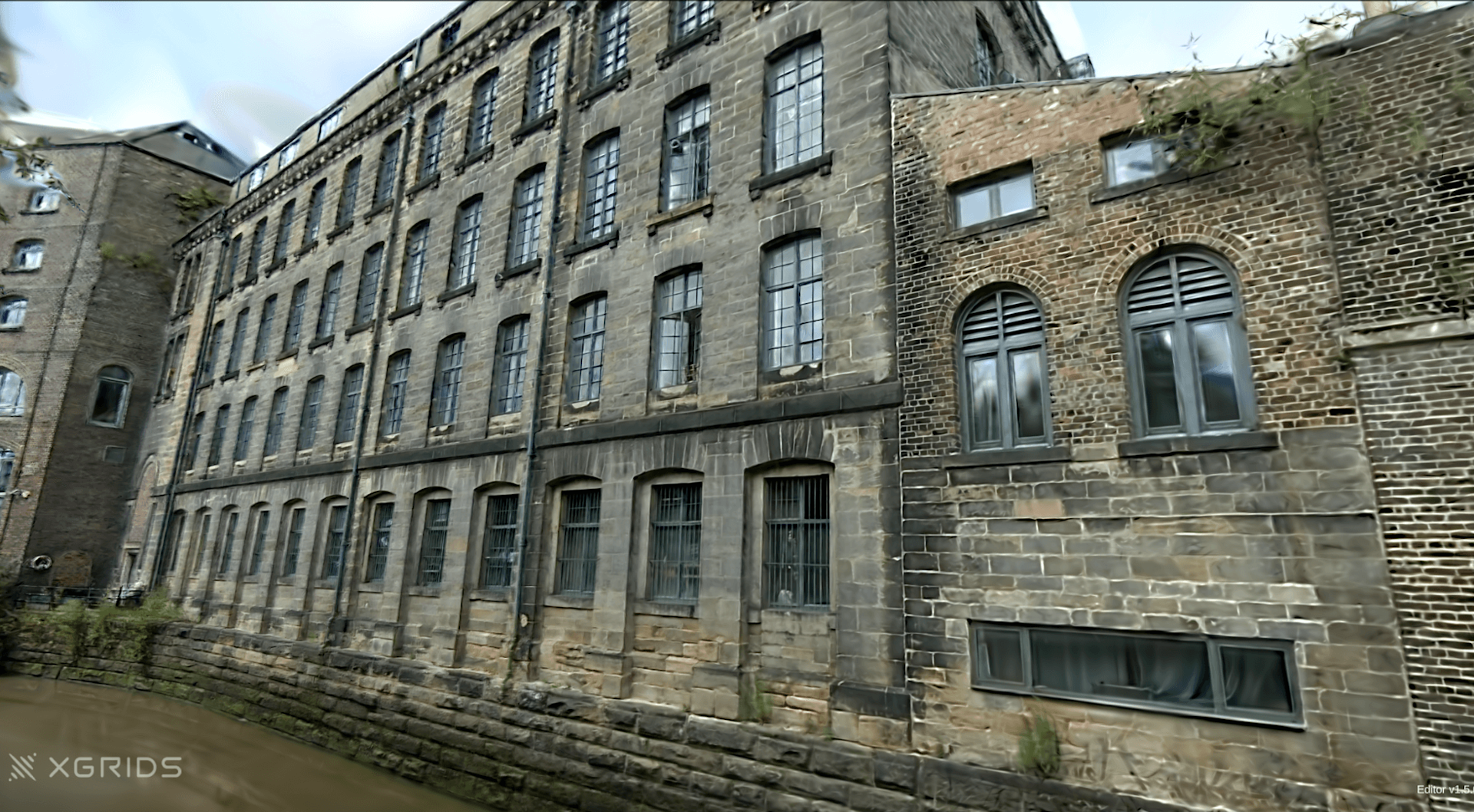
This article explores Gaussian Splatting - highlighting what it is, its benefits, and industry applications - and presents further dataset examples collected and processed using the XGRIDS ecosystem.
heliguy™ has partnered with XGRIDS to stock its range of scanners - available to buy or hire - and the in-house surveying team can help organisations integrate these solutions into their workflows.
What is Gaussian Splatting?
Gaussian Splatting is a novel method for representing and rendering 3D scenes using collections of 3D Gaussians.
These are essentially blobs of data in 3D space with variable orientations and densities - to approximate the appearance of objects.
A Gaussian in this context is defined by its spatial position, colour, transparency and shape parameters.
These ‘splats’ collectively form a cloud-like representation of a scene that can be rendered directly.
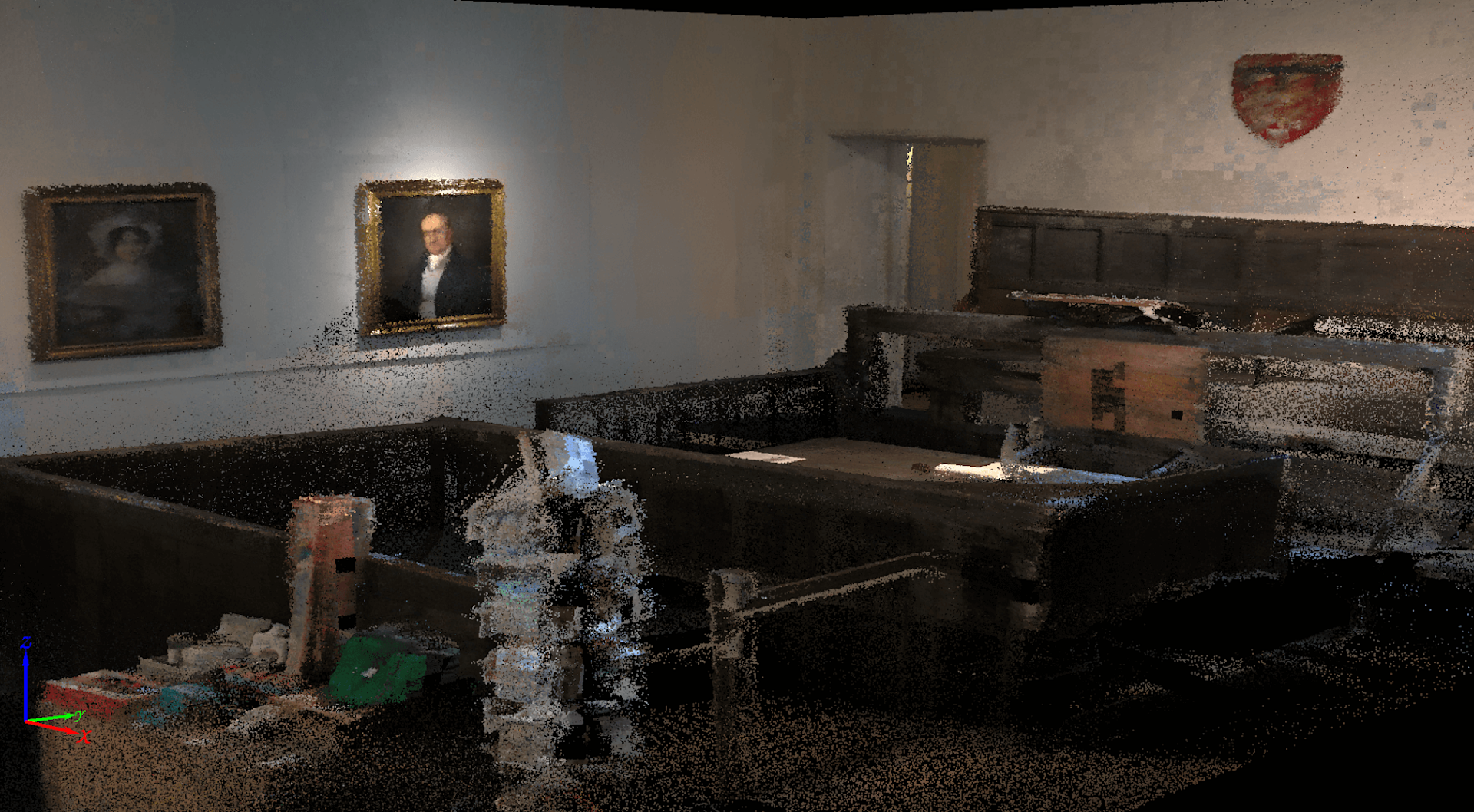
This makes them particularly suitable for modelling realistic lighting and reflective surfaces and is the key feature that sets them apart from traditional methods such as triangle meshes or point clouds.
The approach draws on principles of neural rendering and implicit scene representations, enabling smooth and continuous surfaces without the computational overhead of meshes.
Gaussian Splatting is particularly suited to scenarios where capturing and reconstructing real-world scenes is the goal.
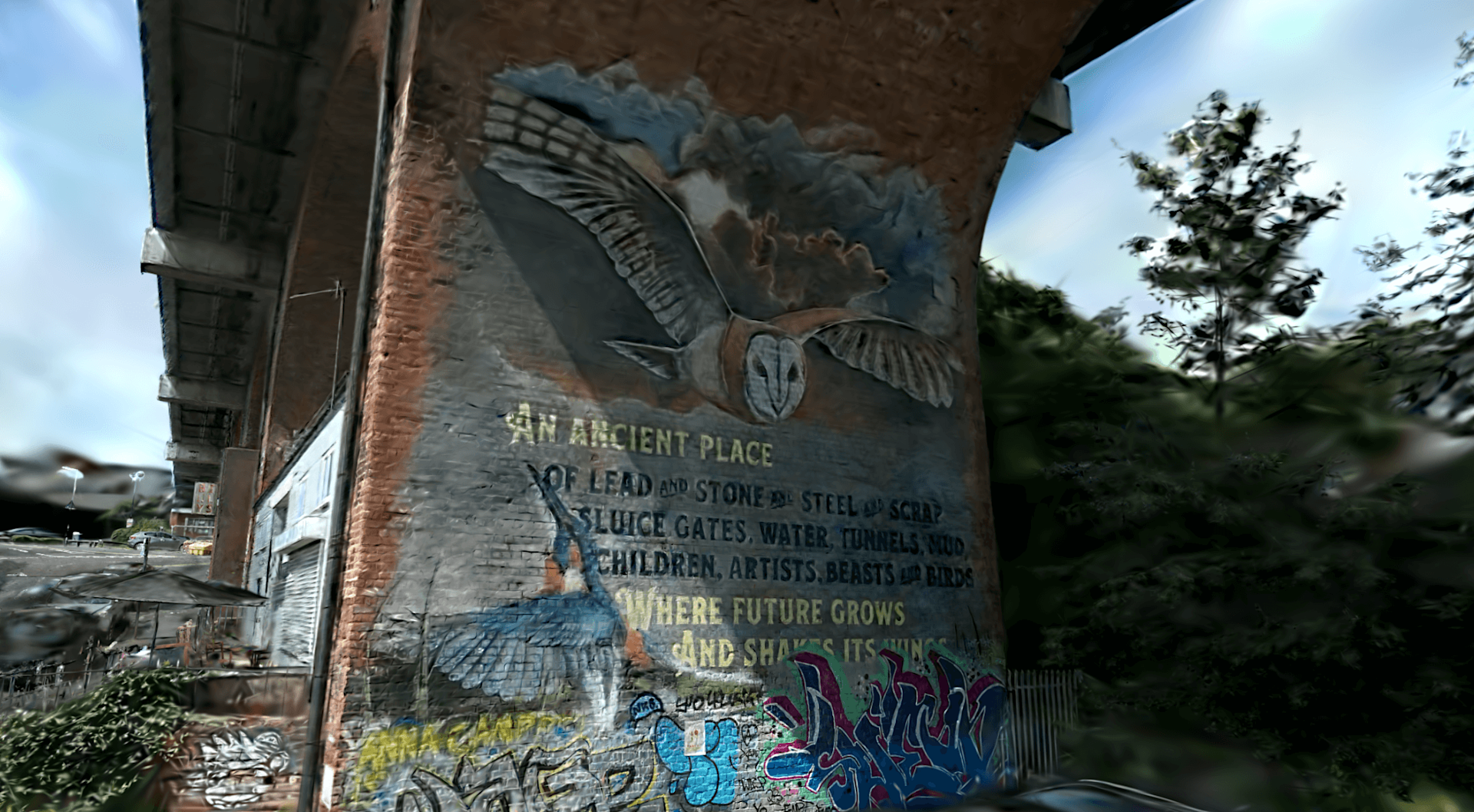
Gaussian Splatting is gaining traction as a method to handle NeRF-like tasks (Neural Radiance Fields), but with improved rendering efficiency.
Benefits Of Gaussian Splatting
Gaussian Splatting has numerous benefits. These include:
Real-time Rendering: Gaussian Splatting can render complex scenes in real time, which is important for interactive applications like video games and virtual simulations.
Realism: Captures fine details and complex lighting effects like reflections and refractions. This leads to photorealistic results that were previously hard to achieve in real-time rendering.
Scalable Resolution: Because Gaussians can represent fine-grained details in a continuous manner, the resolution of a rendered scene can scale dynamically. It can handle millions of splats, enabling the creation of large-scale environments.
Smooth Representation: The Gaussian model inherently supports smooth interpolation of colours and shapes, making it ideal for scenarios where seamless transitions are critical, such as animations or scientific visualisations.
Adaptability: Gaussian Splatting can be easily adapted to various forms of input data, including point clouds, volumetric scans, or even camera images. Its compatibility with different datasets opens up a wide range of possibilities for real-world applications.
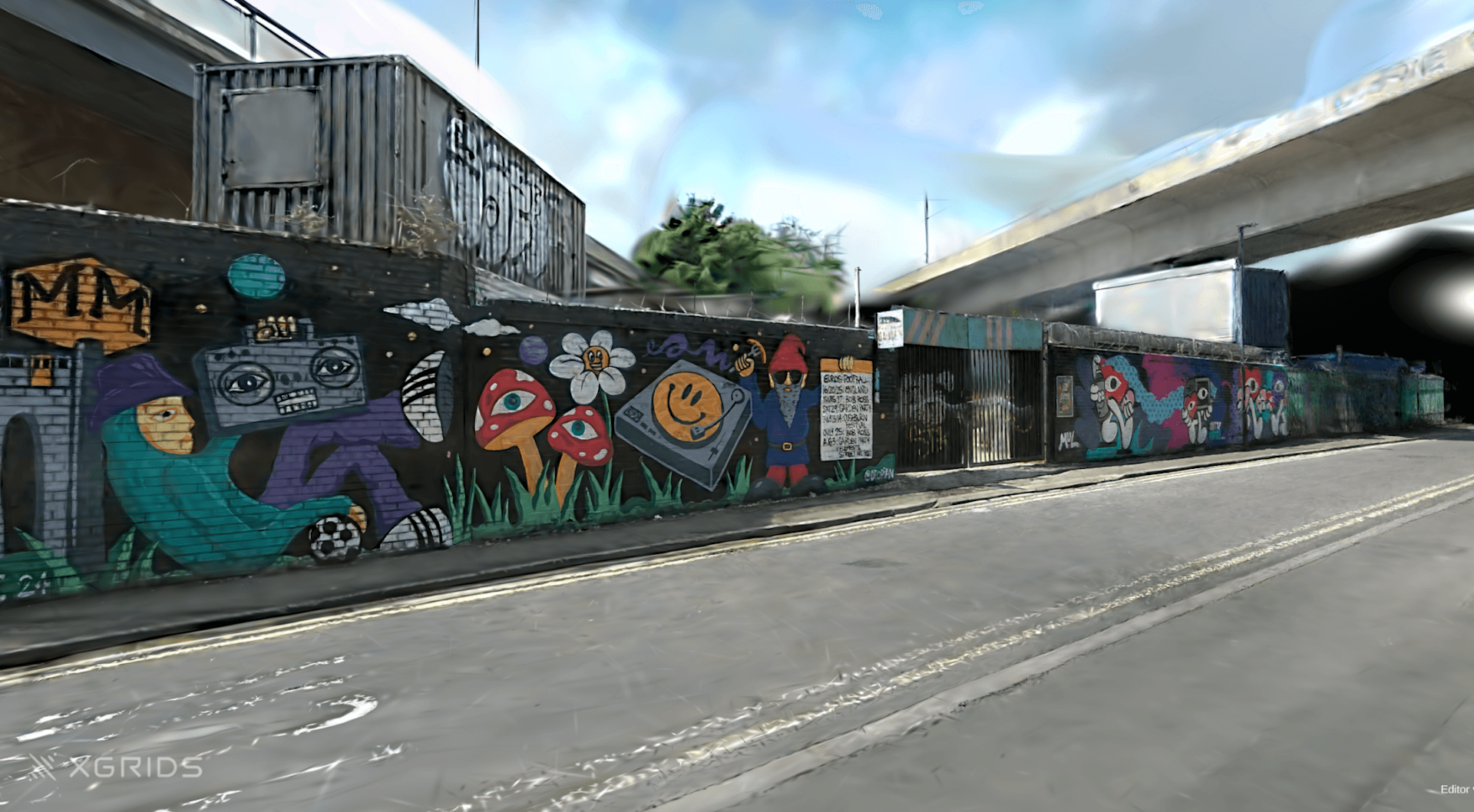
One thing to note with Gaussian Splatting is that its real-time performance depends on modern GPUs, which might limit accessibility for lower-end hardware or mobile devices.
Industry Applications Of Gaussian Splatting
Thanks to its speed, realism, and scalability, Gaussian Splatting can be used to benefit a range of industries and applications. These include:
Virtual Reality (VR) and Augmented Reality (AR): Real-time rendering capabilities make Gaussian Splatting ideal for immersive environments, enabling smooth, high-quality visuals on consumer-grade hardware.
Gaming: Provides efficient, scalable scene representations, reducing rendering times and improving performance for dynamic, interactive environments.
Surveying and Mapping: Handles point clouds and LiDAR data efficiently, creating high-fidelity 3D models of terrains, buildings, or infrastructure.
Film and Animation: Simplifies rendering for complex scenes, offering smooth transitions and reduced computational overhead in animations or visual effects.
Digital Twins: Used in industries like urban planning and construction to create accurate, visually appealing replicas of real-world assets.
Virtual Tours: Gaussian Splatting can create realistic tours of environments, beneficial for applications such as real estate, tourism, or showcasing student accommodation.
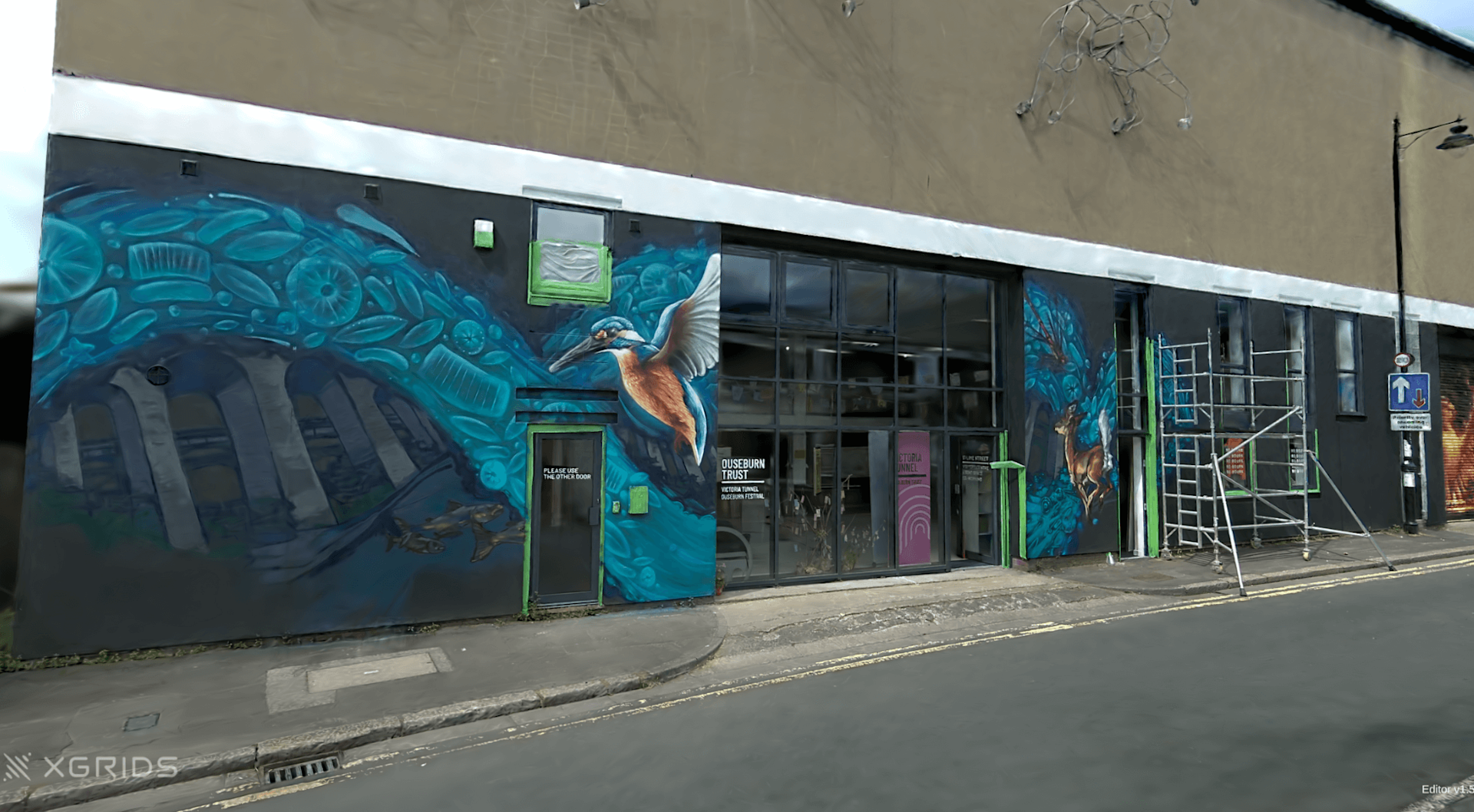
Gaussian Splatting: Dataset Examples
The following datasets provide further evidence of the power of Gaussian Splatting technology, used in conjunction with XGRIDS scanners and software.
Dataset One: St James' Park Stadium
This dataset presents a stunning recreation of the outside of Newcastle United’s St James’ Park stadium.
The scan was conducted by the heliguy™ survey team in five minutes with the Lixel K1, followed by three hours of processing time. The outputs seamlessly integrate with professional 3D software such as Unity and Unreal Engine.
Dataset Two: Knaresbrough Castle
heliguy™ client Alan Broun utilised the XGRIDS ecosystem to build this realistic model of the outside of Knaresbrough Castle.
It took him less than an hour to scan the site with the K1. The processing time took 12 hours.
He also captured the interior of the castle, taking around 15 minutes to scan, and then about 6 hours to process on his RTX 4090.
As well as the photo-realistic representation, the datasets can be viewed as LiDAR point clouds, providing high-accuracies and the ability to conduct measurements and annotations.
For instance, these two images show .las point clouds of the castle.
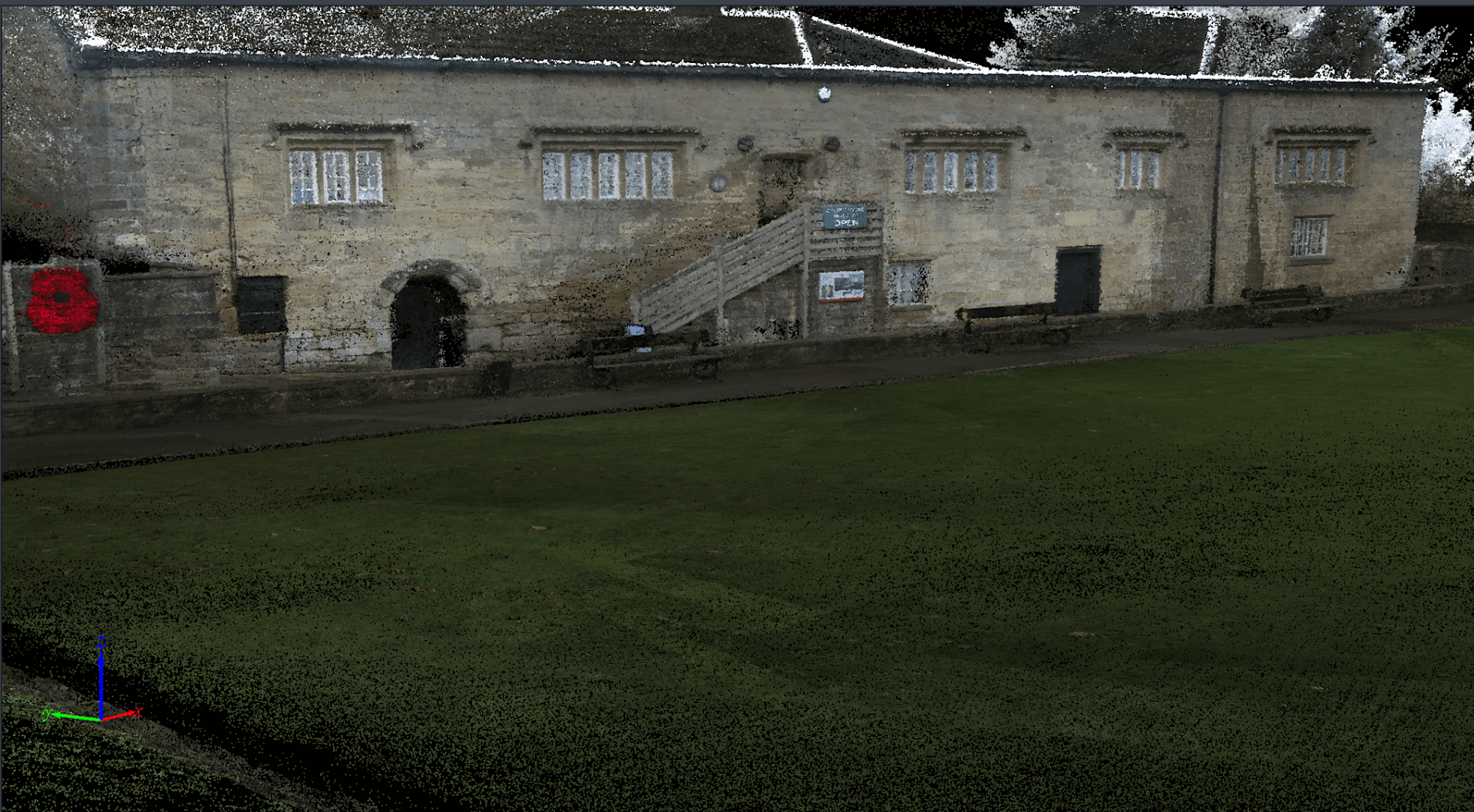
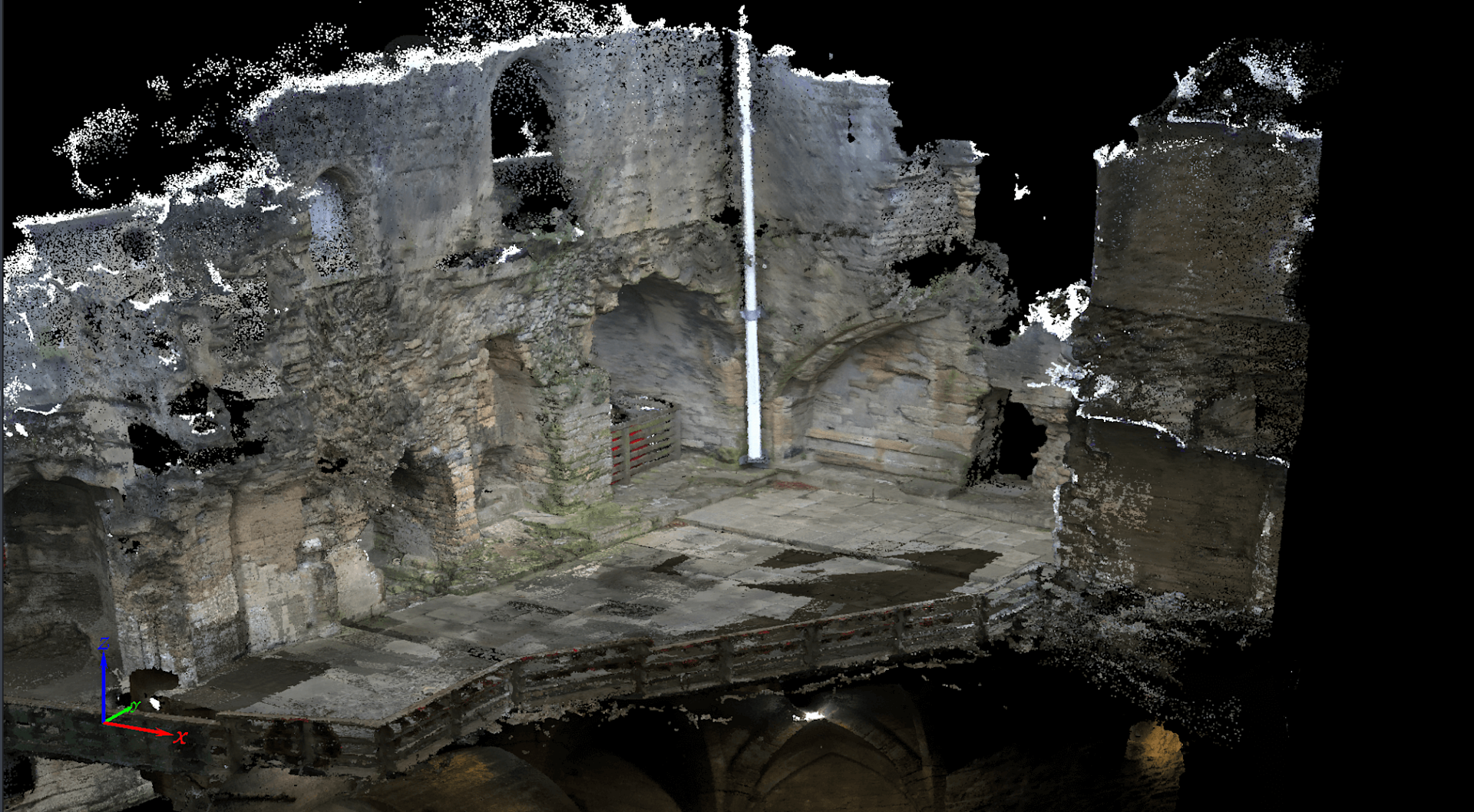
He said: “The survey of the inside and outside of the castle were very quick and the subsequent Gaussian Splatting visualisations were very nice, yielding photo-realistic rendering. While it is early days for Gaussian Splatting, its potential is clear.”
And the ability to hire the equipment from heliguy™ enabled Alan to test the kit and prove the concept of Gaussian Splatting without committing to an upfront purchase.
He said: “Being able to rent the product has been fantastic. It has provided the chance to access the product for testing and is the stepping stone to purchasing.”
XGRIDS Scanners And Software
Gaussian Splatting is an emerging technology - and one of the company’s leading the charge is XGRIDS.
The ecosystem comprises a series of handheld scanners - K1, L2 (16 channel or 32 channel), and the new L2 Pro. The scanners are SLAM-based for rapid, on-the-go mobile mapping and enable data collection in GPS-denied environments, such as indoors and underground.
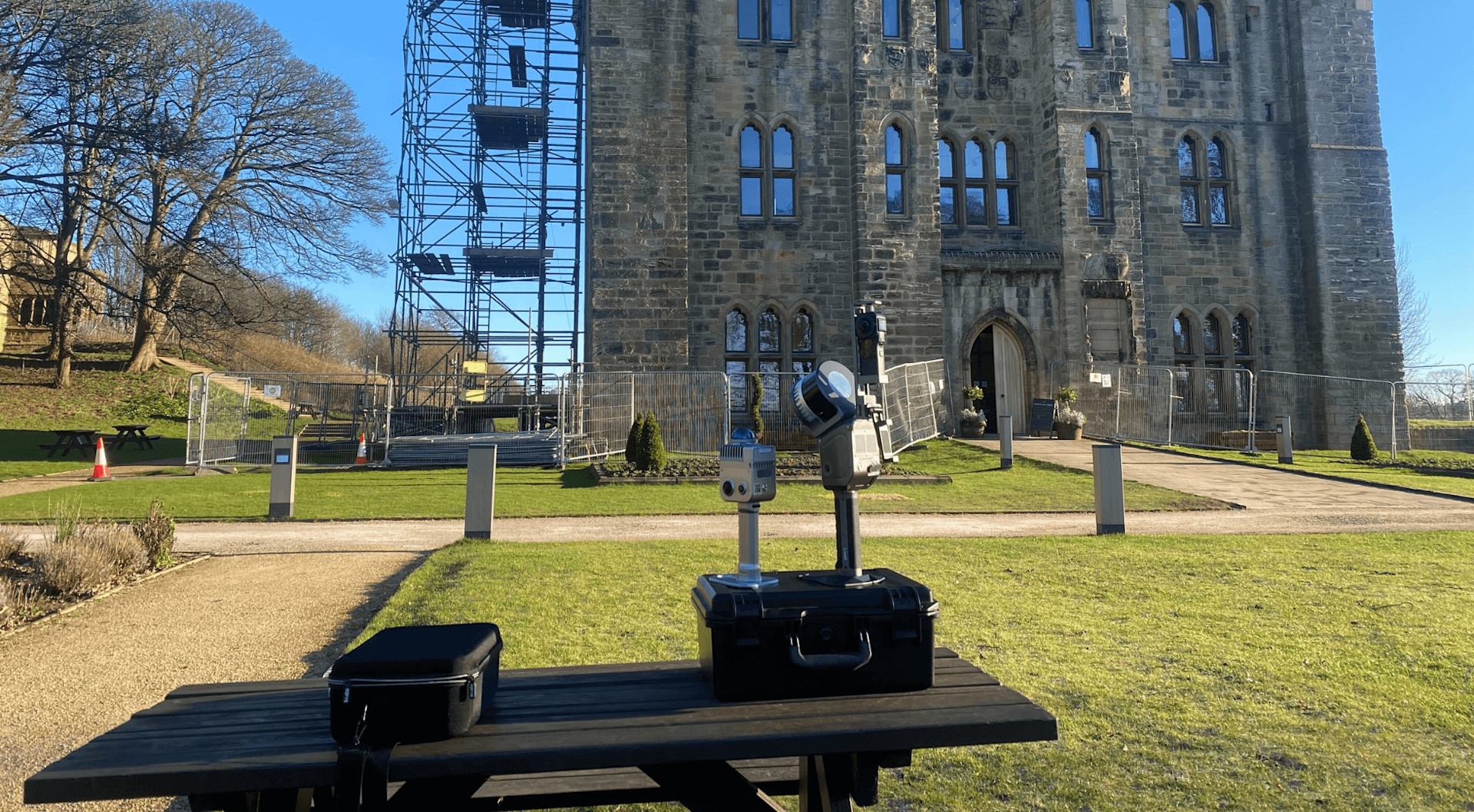
They integrate a panoramic camera and LiDAR model, enabling the collection of accurate real-time true-colour point clouds.
One of the advantages of XGRIDS’ scanners is that they allow surveyors to create 3DGS models of large-scale scenes, whereas other competing solutions don’t allow operators to walk through an area - meaning they have to focus on a single subject capturing multiple angles.
The Lixel L2 Pro and K1 each have two 48MP cameras, which can be used for Gaussian Splatting. The L2 has RGB cameras to help with true-colour point cloud generation, but for Gaussian Splatting, a separate Insta360 action camera is required.
The scanners work in conjunction with:
LixelGo App: One-click operation. Real-time viewing of camera images, elevation information, true-colour point clouds, and status displays.
LixelStudio: 3D point cloud processing software, offering tools for viewing, editing, and processing point cloud data, along with industry-specific plugins.
Lixel CyberColour: Software platform that utilises a combination of a self-developed multi-SLAM algorithm and optimised Gaussian Splatting technology, allowing users to automatically create ultra-realistic large-scale 3D models.
The table below shows an at-a-glance specification table showing the difference between the XGRIDS scanners.
Lixel L2 Pro | Lixel L2 | Lixel K1 | |
|---|---|---|---|
Working Range | 16 channel: 0.5m to 120m 32 channel (two versions): 0.5m to 120m or 0.5m to 300m | 16 channel: 0.5m to 120m 32 channel: 0.5m to 300m | 0.1m to 40m@10% 70m@80% |
LiDAR Sensor FOV | 360 x 270 | 360 x 270 | 360 |
Scan Speed (pts/s) | 16 channel: 320,000 32 channel: 640,000 | 16 channel: 320,000 32 channel: 640,000 | 200,000 |
Operating Time | 1.5 hours | 1.5 hours | 1.5 hours |
Storage Capacity | 1TB SSD | 1TB | microSD card 256G (replaceable) |
Accuracy | Real-time Accuracies: Relative Accuracy: 2cm Absolute Vertical Accuracy: 3cm Absolute Horizontal Accuracy: 3cm Processed Accuracies: Relative Accuracy: 1cm Absolute Vertical Accuracy: 3cm Absolute Horizontal Accuracy: 3cm Repeat Accuracy: 2cm | Processed Accuracies: Relative Accuracy: 1.2cm Absolute Accuracy: 3cm Repeat Accuracy: 2cm | Processed Accuracies: Relative Accuracy: 1.2cm Absolute Accuracy: 3cm Repeat Accuracy: 2cm |
Handheld Weight | 1.7kg | 16 channel: 1.6kg 32 channel: 1.9kg | 1kg |
Operating Temperature | -20°C to 50°C | -20°C to 50°C | -20°C to 50°C |
Protection Level | IP54 | IP54 | IP54 |
The Future of Gaussian Splatting
While Gaussian Splatting is still a relatively new concept, its promise is undeniable. It represents a step toward more efficient, flexible, and scalable 3D rendering.
Whether you’re a filmmaker, game developer, or a professional in surveying and mapping, this innovative technique holds the potential to transform how we create and interact with digital worlds.
heliguy™ has partnered with XGRIDS to sell and rent out the XGRIDS handheld scanners, while the in-house survey team can help you integrate them within your workflows. For more details, contact us.
